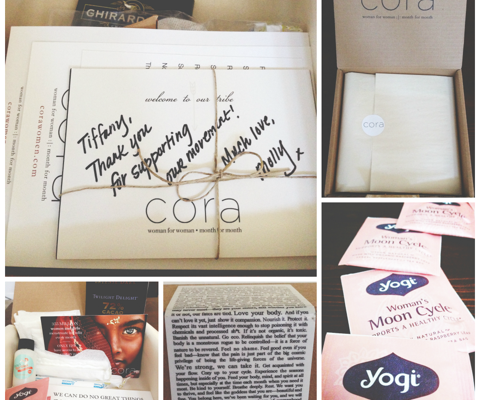
In 2013, the Oxford dictionary declared “selfie” as the word of the year. Although people have been taking selfies since the 1800s, the first use of the word can be traced to an online Australian forum on September 13, 2002. In fact, there are over 57 million images on Instagram with the hashtag #selfie. However, with such popularity, shouldn’t there be more creative ways to take one? Enter the Selfie Challenge App. This app challenges you to take imaginative selfies such as “Candelit Selfie” or the “Workin’ Late. Feelin Great” selfie. We recently had the opportunity to interview its creator Kevin J. Dolan. Read on to discover more.
I’ve been building websites and playing with computers since I was a kid. I wasn’t sure I wanted to do it professionally–I actually started college as a physics major, but that changed pretty quickly. I did a lot of freelance web development to help pay the bills and realized that might be something I’d like to do long term.
I met the rest of the team there at Cornell. Most of us lived off-campus in a big house we rented. The amazing thing about that house was the amount of creative energy. You could just pitch some ridiculous project at the kitchen table and somebody would be right there to help you make it a reality.
SLM: What gave you the idea for the Selfie Challenge?
We were just having fun on Twitter one day in November, tweeting silly startup ideas. Most of them were pretty awful, like “Food Roulette,” an app that would place random Seamless orders. For whatever reason the Selfie Challenge idea got a lot of positive feedback. I had never written an app before, but I had a few days off for Thanksgiving, so I figured that was a good opportunity to learn about writing apps and built the first version.
I pitched the idea to the others on Gchat and they were in. That was about a week before all the hype about selfies really hit, so our launch couldn’t have come at a better time. We’ve certainly had a leg up because of that.
SLM: What were some of your early obstacles?
Oh, so many problems. First was designing the app. I’m not a graphic designer, so I had to leverage open-source graphics frameworks wherever possible. There’s also a whole lot of platform-specific red tape to building and releasing apps.
Then we needed to actually find users! None of us really know how to do PR, so there were a lot of dead-end emails to blogs, but we were very lucky that what users we could find really believed in Selfie Challenge and it mostly spread through word-of-mouth. Today, around 80 percent of our new users are connected with an existing user on either Facebook or Twitter–and the numbers just keep on growing!

SLM: Explain the thought process behind the Selfie Challenge.
We knew that the idea of challenges was appealing, but at first, it was actually designed around quests–a series of interrelated challenges that tell some kind of story. That’s a feature we may implement in the future, but the key to getting the app out as quickly as possible was to boil it down to the bare necessities and then add features as they were requested. The first version didn’t even have likes or comments, but people asked for them so we built them.
Our goal is to build a real community around selfies, and that means reacting to how users are actually using the platform. We don’t really believe in just assuming we know what people want. The vast majority of our new features come from direct requests from users or analyzing user behavior. We’re pretty confident that’s the right way to get to where we need to be.
SLM: Where do you see selfies going five years from now?
I’m not naive. I know that a lot of the buzz around selfies is going to die down once this news cycle ends, but the selfie isn’t going anywhere. We recently published this infographic, A Brief History of the Selfie, to show that selfies have actually been around since the dawn of photography.
Selfies are a great way to tell the world “I was here.” There’s a lot of debate as to whether or not that’s a good thing, but I fall pretty strongly in the camp that it’s no different than cave paintings or poetry–it’s just another great tool for self-expression. One readily available to everyone. Like it or not, selfies are here to stay.

SLM: Who is your target market?
Currently, our users fall mainly into one of two age buckets: teens and twenty-somethings. When we first released the app, it spread pretty quickly through our own social circles, so it was predominantly twenty-somethings. Earlier this month the teens started taking over, and now it’s a dead-even race between the two. It’s really interesting to see the very different ways the two groups use the app. The overall user base tends to be about 60 percent female and females are generally more engaged–having taken about 70 percent of all the selfies.
SLM: What advice would you give to Sweet Lemon readers who want to create their own apps?
If you’re already a programmer, then there’s really nothing stopping you. I’d recommend looking into Phonegap to accelerate your time-to-market on both Android and iPhone. The most important thing is to get something out as quickly as possible, learn as much as you can and constantly iterate. It’s easy to get caught up in trying to make it perfect and that can lead to stagnation.
If you’ve never written a line of code, programming can be really easy to learn if you’re motivated. It’s easiest to learn when you’re actually trying to build something.
I don’t really believe in learning programming in a vacuum. There are a ton of resources to get started and whenever you run into a wall, somebody else has most likely run into it before. I always tell people that the most important tool for programming is a good Google search.
SLM: When life gives you lemons, you…?
Coincidentally, life just gave me a lemon, so I did the Selfie Challenge Pucker Up!



